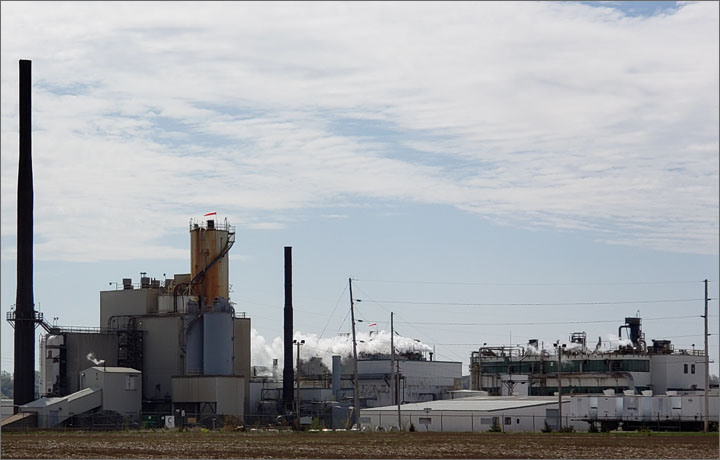| April 2021 |

By Erin Morse
The life of the PVC resin plant at Henry currently known as Emerald Polymer may be drawing to a close. February 2, the Journal Star reported the plant announced it would be closing and likely demolished by summer due to “foreign competition”. The convenient use of xenophobia to shape public opinion is nothing new. Here it’s used to cloak the company’s total unwillingness to consider updating the site’s waste water treatment for cleaner, safer operations and to walk away from the decades of illness, cancer and a high nitrate water supply they will leave behind.
The Illinois EPA seems to be finally refusing to sign off on another 5-year extension of the plant releasing waste water directly into the Illinois River. This effluent, released 80 to 90 feet above the river for “instant mixing”, is well over the legal limit of ammonia nitrogen and BOD (Biological Oxygen Demand). The adjusted standard the plant has been granted since the early 1990’s is over 46 times greater than the Illinois allowable limit. According to legal documents filed by the EPA this is the only plant in the state to have these elevated numbers. Also, Emerald is the only location in the country that still manufactures mercaptobenzothiasole (2-MBT), known to be toxic in aquatic systems. Unfortunately, since the IL EPA is now overwhelmed by the coal-fired plant demolition near Alton they cannot currently manage this situation.
Questions remain. Will there be any protection or oversight planned for already overexposed local residents and the river during the plant demolition when there is no law to guide such a process? How will the neighboring plant, Mexichem, process its wastewater when the larger plant no longer manages that task? Will workers and local residents be compensated for their loss of health and lives? Will the companies that profited from this be required to clean up the land, water and wildlife? Will we ever have the opportunity to attract new cleaner, industry with safe jobs when our area has been poisoned? What does it mean that the materials modern society expects to make everyday objects cannot be made affordably and safely at the same time?
The plant may close but how long will the damage to the community and all life downstream live on?